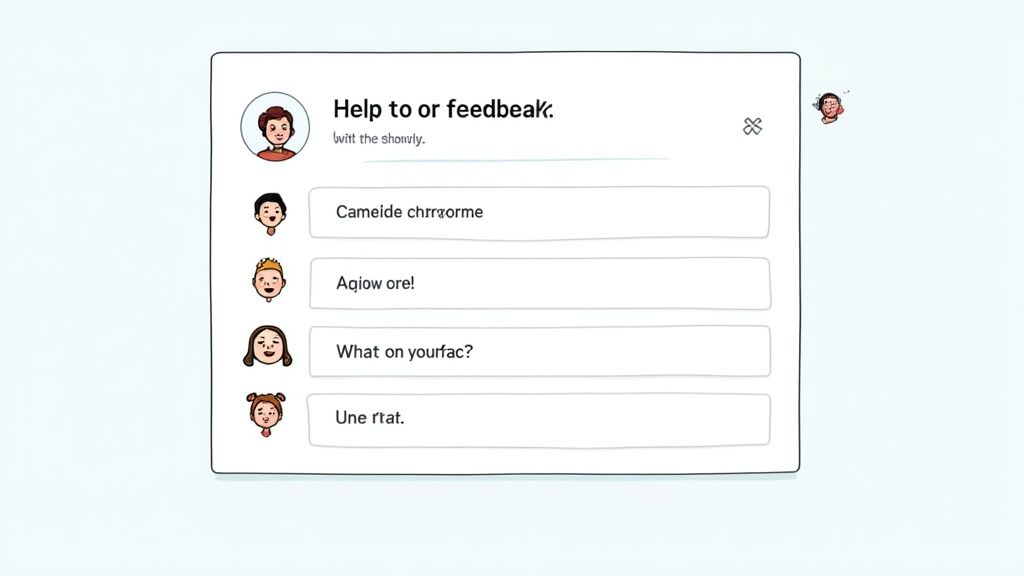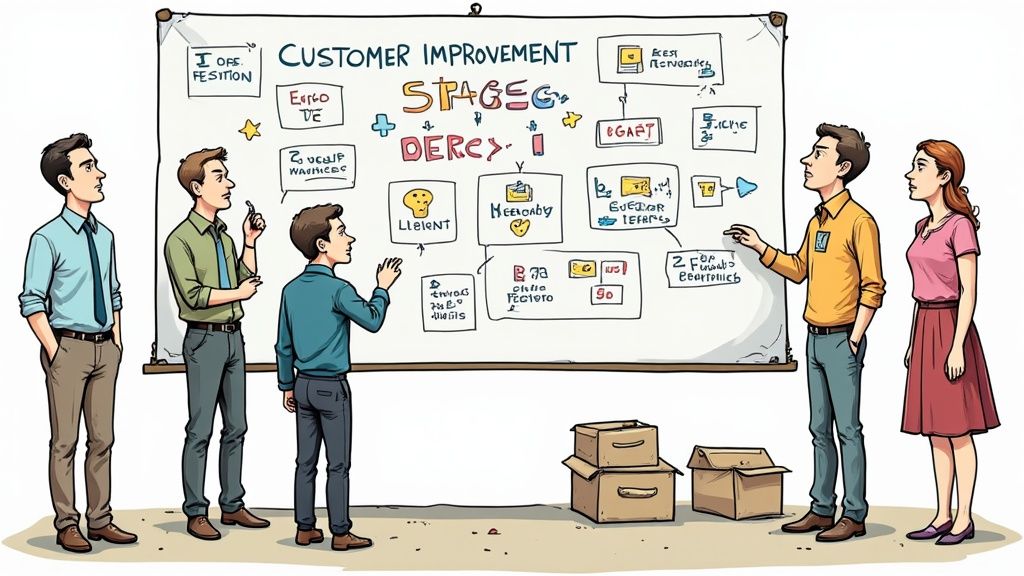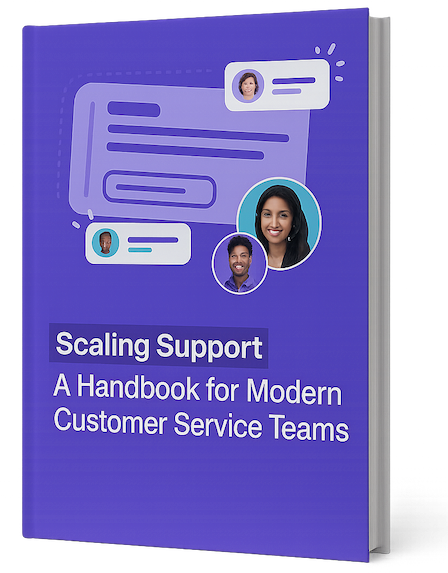Understanding What Really Drives Customer Satisfaction

Meeting basic customer needs is no longer enough to succeed in business. Today's buyers expect more than just good products and services – they want experiences that feel personal, responsive and show that companies genuinely care about their satisfaction.
The Importance of Speed and Efficiency
Quick response times matter enormously to modern customers. Research shows that 72% of buyers expect businesses to reply within 30 minutes when they reach out for help. For example, customers who receive a response within one hour are much more likely to make future purchases. These findings highlight why First Response Time (FRT) plays such a vital role in shaping customer views and loyalty. The message is clear – businesses must focus on making their customer service processes faster and more effective.
The Power of Personalization
Making each customer feel valued as an individual is just as important as speed. For example, studies find that 80% of consumers prefer buying from companies that provide personalized experiences. This personal touch makes customers more willing to recommend brands to others and even pay premium prices. The impact goes beyond just making buyers happy – it creates real business results. By getting to know each customer's specific needs and preferences, companies build stronger relationships that keep buyers coming back.
Why Retention Matters
Happy customers tend to stick around and buy more – in fact, 93% of satisfied customers are likely to make additional purchases. For every 1% improvement in customer satisfaction scores, businesses typically see a 5% increase in retention rates, proving that delivering great experiences directly affects the bottom line. This means companies must pay close attention to customer behavior, spot early warning signs of dissatisfaction, and proactively solve problems before they grow. When businesses consistently meet and exceed customer expectations, they build a loyal customer base that drives sustained growth. The key is understanding that speed, personalization and retention work together – excelling at all three creates lasting success.
Creating Personalized Experiences That Actually Matter

Great customer service is about making each interaction feel personal and meaningful. Basic personalization like adding a customer's name to emails is just the start. Research shows that 80% of consumers are more likely to buy from companies offering genuinely personalized experiences. This highlights how much customers value authentic, individualized interactions that go beyond surface-level tactics.
Understanding Your Customer's Journey
Creating meaningful personalization starts with mapping out each step of your customer's experience. By identifying every interaction point – from how customers first find you to their post-purchase experience – you can spot opportunities to make each touchpoint more relevant and helpful.
- Discovery: What brings customers to your business initially? What needs are they trying to fulfill?
- Consideration: What information and resources help them evaluate options? What concerns do they need addressed?
- Purchase: What factors drive their buying decision? How smooth is their purchasing experience?
- Post-Purchase: How can you stay connected and build lasting relationships?
This framework helps you personalize strategically and gather insights about what resonates with different customer segments. With this understanding, you can create experiences that truly help customers achieve their goals.
Delivering Personalized Experiences at Scale
Making every interaction feel personal can seem overwhelming, especially for larger businesses. A well-implemented Customer Relationship Management (CRM) system helps by organizing customer data and enabling targeted communications based on demographics, purchase history and behaviors. However, technology alone isn't enough – the human element remains essential for authentic personalization.
Balancing Automation With Human Touch
While automation helps deliver personalized experiences efficiently, maintaining genuine human connections is crucial. For instance, an automated email recommending products based on past purchases is helpful. But following up with a thoughtful phone call where a real person asks about their experience and offers tailored suggestions creates a much deeper connection.
The key is finding the right mix of automation and authentic human interaction. An example would be an ecommerce company that sends automated order confirmations but has customer service reps proactively reach out to first-time buyers to answer questions and provide a personal welcome. This balanced approach shows customers you value them as individuals while still operating efficiently at scale.
By focusing on creating genuinely helpful, personalized experiences at every stage of the customer journey, you can build stronger relationships that drive long-term loyalty and satisfaction. The goal is making each customer feel understood and supported in ways that matter to them specifically.
Building a Customer Retention Engine That Works

Getting customers to stick around requires more than just good service – it takes a thoughtful strategy focused on building lasting relationships. While providing great experiences helps create satisfied customers, converting them into loyal ones means being proactive rather than just reactive. Research shows this approach works – 93% of satisfied customers are more likely to buy again, showing the clear connection between keeping customers happy and keeping them coming back.
Identifying Early Warning Signs of Customer Dissatisfaction
You need to watch for key signals that could indicate a customer is unhappy, just like doctors monitor vital signs. Some red flags include customers suddenly buying less frequently or posting negative comments on social media. Service interactions can also reveal recurring issues or complaints. This means putting systems in place to gather and analyze feedback from multiple sources.
Implementing Proactive Solutions
Once you spot potential issues, taking action early is essential for making customers happy and keeping them around. For instance, reaching out directly to dissatisfied customers with personalized solutions shows you care. If someone reports an issue, quickly offering a replacement or refund along with a genuine apology goes a long way. Making ongoing improvements based on common pain points also demonstrates your commitment to getting better. Think of it like car maintenance – fixing small problems prevents bigger headaches later.
Scaling Retention Efforts While Maintaining Personal Connections
As your business grows, it gets harder to provide personal attention to every customer. Technology like CRM systems can help by letting you group customers based on their behaviors and preferences so you can send relevant communications and offers. However, don't rely too heavily on automation. While automated emails and chatbots are efficient, they should enhance rather than replace human interaction. The key is finding the right mix of automated efficiency and genuine personal engagement.
Examples of Successful Retention Programs
Many companies effectively scale their retention by creating programs centered on customer relationships. Some offer loyalty rewards like special discounts or early access to new products. Others build online communities where customers connect with each other and the brand. A software company might host a forum for users to share tips, creating stronger bonds with their product. This shows how focusing on community can significantly boost satisfaction and retention over time.
Measuring What Actually Matters in Customer Satisfaction

Delivering excellent customer experiences is essential, but how do you know if your efforts are making a real difference? The key lies in measuring customer satisfaction through metrics that provide clear, actionable insights. Simply gathering data isn't enough – you need to focus on measurements that reveal genuine customer sentiment and help drive improvements.
Key Metrics for Measuring Customer Satisfaction
Several proven metrics can give you a clear picture of customer satisfaction:
-
Customer Satisfaction Score (CSAT): This straightforward metric asks customers to rate their satisfaction after specific interactions. For example, you might send a quick CSAT survey after a support conversation or purchase to identify what's working well and what needs attention.
-
Net Promoter Score (NPS): NPS measures customer loyalty by asking if they would recommend your business to others. Companies that regularly track NPS often grow faster than competitors, with some seeing customer referrals increase by 10% or more.
-
First Response Time (FRT): Quick responses matter deeply to customers. FRT tracks how fast your team gets back to customer inquiries. With research showing 72% of customers expect a response within 30 minutes, monitoring and improving FRT is crucial for meeting customer needs.
Beyond Traditional Metrics: Understanding Customer Behavior
While CSAT and NPS provide valuable data points, leading companies dig deeper to understand their customers. This means analyzing behavior across different touchpoints to spot patterns and opportunities.
For instance, website analytics can reveal how customers interact with your site – which pages they visit most, where they get stuck, and what causes them to leave. This information helps identify friction points that need fixing.
Additionally, reviewing feedback from social media and online reviews gives you broader insight into customer sentiment. This unfiltered feedback often surfaces issues that standard surveys might miss.
Implementing an Effective Measurement System
Creating a measurement system that drives real improvements requires a thoughtful approach:
-
Choose Relevant Metrics: Pick measurements that align with your business goals and customer journey stages. Focus on metrics that truly matter rather than tracking everything possible.
-
Collect Data Consistently: Set up regular feedback collection to spot trends over time. Create clear processes for gathering customer input and tracking key metrics.
-
Act on Your Findings: Data only creates value when it drives action. Analyze what you learn to identify specific improvements needed, whether that's updating processes, enhancing features, or improving staff training.
By combining traditional satisfaction metrics with deep customer behavior analysis, you'll gain a complete view of customer satisfaction. This understanding enables smart improvements that boost both satisfaction and loyalty. Remember – measuring satisfaction only matters if you use those insights to deliver better experiences for your customers.
Preventing Customer Churn Before It Happens
When customers leave, businesses face significant costs from lost revenue and the resources needed to find new customers. Smart companies focus on keeping existing customers happy rather than just acquiring new ones. By studying customer behavior patterns and identifying early signs of dissatisfaction, you can address problems before they lead to churn.
The Silent Exodus: Why Customers Leave Without a Word
Did you know that 91% of unhappy customers simply disappear without ever complaining? Think about that number – the vast majority of dissatisfied customers never voice their concerns before taking their business elsewhere. Much like a dripping faucet that seems minor at first but wastes gallons over time, small service issues add up and gradually push customers away. The key is catching and fixing problems early, before customers mentally check out.
Recognizing the Red Flags: Early Warning Signs of Churn
Just as doctors monitor vital signs to spot health issues early, businesses need to watch for signs that customers may be at risk of leaving. Here are the key warning signs to track:
- Decreased Engagement: When customers suddenly reduce their purchases or stop visiting your website, it often signals waning interest.
- Negative Social Media Sentiment: Unhappy customers frequently share their frustrations online. Regular social monitoring helps catch issues early.
- Recurring Complaints: When similar problems come up repeatedly in customer service interactions, it points to deeper systemic issues.
- Lengthening Response Times: Slow customer service is incredibly frustrating. Remember that 72% of customers expect a response within 30 minutes. Missing this benchmark often leads to churn.
By actively monitoring these indicators, you can identify at-risk customers and take action before they leave.
Proactive Intervention: Turning Potential Losses Into Loyalty Opportunities
Once you spot customers who might churn, taking swift action can not only save the relationship but make it stronger. Here's how:
- Personalized Outreach: Reach out directly to at-risk customers with solutions tailored to their specific concerns. This could mean offering a discount, upgrading their service, or simply having a conversation to understand and address their needs.
- Swift Service Recovery: When problems arise, respond quickly with a sincere apology and concrete solution like a refund or replacement. This often turns negative experiences into positive ones.
- Continuous Improvement: Show customers you value their input by fixing recurring issues in your products, services, and processes. When customers see their feedback leading to real improvements, it builds long-term satisfaction.
By catching problems early and taking meaningful action to address them, you can transform potential churn situations into opportunities for stronger customer relationships. Like a skilled gardener who notices and addresses issues before plants wither, successful businesses actively nurture customer relationships to keep them healthy and growing.
Creating a Customer-First Organization: A Guide to Culture Change
Developing a true customer-first organization requires more than new tools or training – it demands embedding customer focus into your company's very foundation. When every employee from top to bottom understands and prioritizes exceptional customer service, tangible benefits follow – from higher satisfaction rates to increased loyalty and stronger financial results.
Building a Strong Customer Service Culture
To create an environment where customer service excellence can thrive, organizations need to focus on three key areas:
-
Effective Training Programs: Go beyond basic service skills by helping employees deeply understand customer needs, spot potential issues early, and make smart decisions that put customers first. Keep training current as expectations evolve.
-
Employee Empowerment: Give your team members authority to resolve customer issues directly without excessive red tape. This ownership mindset leads to more proactive service. Balance this with clear metrics to track and reward customer-focused behaviors.
-
Breaking Down Department Barriers: Since customers interact with multiple parts of your organization, teams must work together seamlessly. For instance, when a customer reports a technical problem, the support and product teams should collaborate smoothly to implement a fix. This requires establishing clear communication channels and shared customer focus across departments.
Consistent collaboration shows customers you take their needs seriously. Teams that share information and coordinate their efforts deliver a more unified, positive experience.
Tracking Culture Change Impact
Major organizational changes require careful monitoring to ensure they drive real improvements. Use both numbers and direct feedback to measure progress:
-
Key Service Metrics: Regularly track important indicators like Customer Satisfaction Score (CSAT), Net Promoter Score (NPS), and First Response Time. These numbers reveal how customers view your service and whether satisfaction is trending up. Monitor consistently to see if cultural initiatives are working.
-
Direct Customer Input: Conduct regular surveys and interviews to gather firsthand customer perspectives. This qualitative feedback provides valuable context behind the numbers and highlights specific areas where cultural shifts are making a difference – or where more work is needed.
-
Front-Line Staff Insights: Your customer-facing employees often spot issues and opportunities first. Create channels for them to share what's working and what needs improvement. Their real-world experience helps ensure culture changes align with actual customer interactions.
Building a customer-first culture takes ongoing commitment, but the results are worth it – happier customers, more engaged employees, and stronger business growth. Ready to take your customer service to the next level? Try SupportMan to empower your team with real-time insights and improved efficiency. Start your free trial today, no credit card required.


